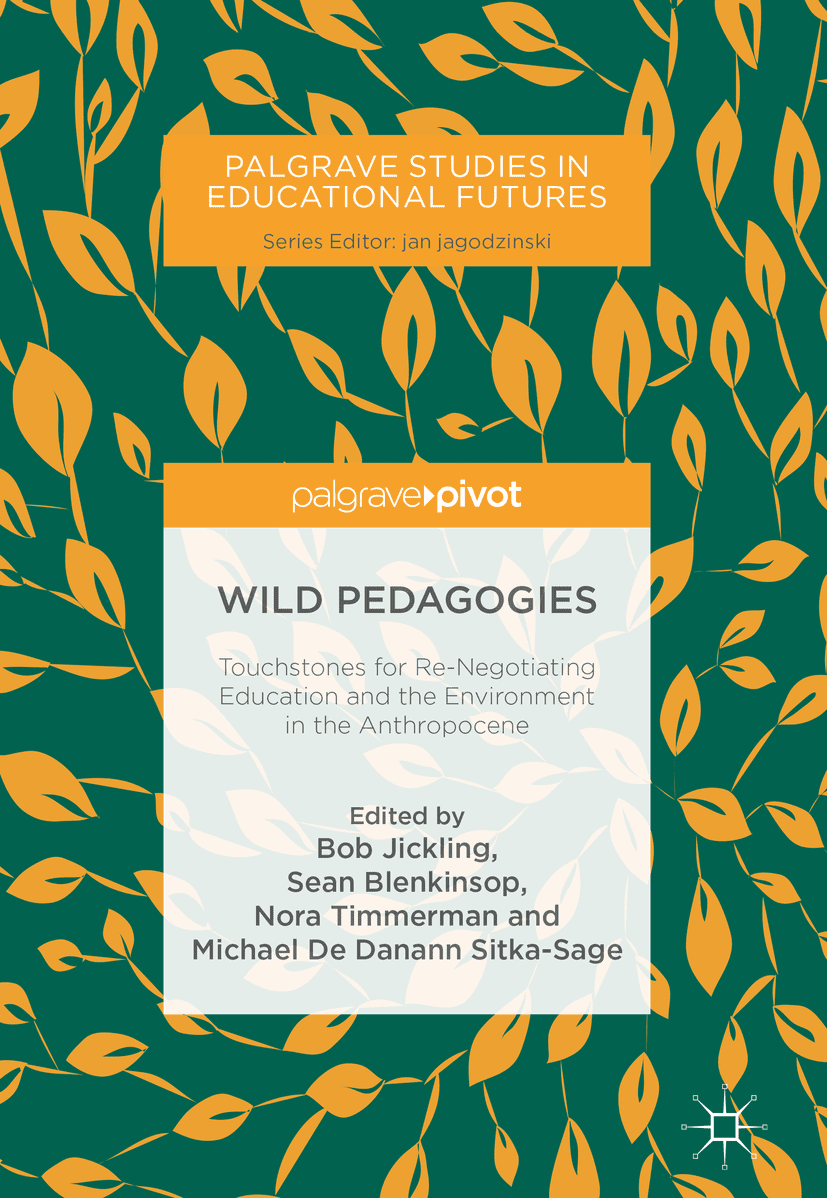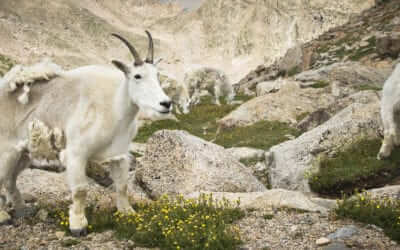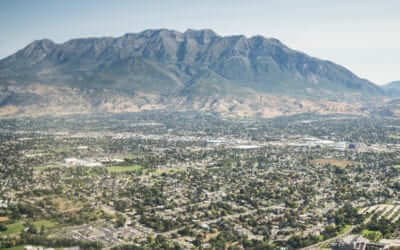Book Review
John Shultis, Book Review Editor
Wilderness Digest
December 2018 | Volume 24, Number 3
WILD PEDAGOGIES: TOUCHSTONES FOR RE-NEGOTIATING EDUCATION AND THE ENVIRONMENT IN THE ANTHROPOCENE
edited by Bob Jickling, Sean Blenkinsop, Nora Timmerman, and Michael De Danann Sitka-Sage. 2018. Palgrave Macmillan. 140 pp. $69.99 (hc).

On a May 2017 sailing trip around remote Scottish islands, a group of environmental educators “aimed to work together in ways that could take us outside of scholarly conventions, open up opportunities for meaningful interactions with the more-than-human world, and position ourselves in a relatively wild place” (p. 12). Being in the wild allowed the group “to think, learn and write differently” (p. xii), and indeed their resulting text is often “imaginative, creative, courageous and radical” (p. 19).
The many authors of this book, who wrote as a collective, are passionate environmental educators who firmly believe in the power of the wild and the other species that still surround us. More specifically, the collective believes that
Wild pedagogies rest on two premises. First, human relationships with Earth are not sustainable, and second, education is a necessary partner in any transformational project of the scale required to address the first premise. It will not be enough to simply reform existing educational institutions, it is suggested that they must be re-wilded. (p. 23)
Three main topics are discussed: the role of wilderness in reconstructing a new worldview and educational system (Chapter 2), the challenges facing environmental education (Chapter 3) and possible ways forward (Chapter 5), and how the Anthropocene concept can help reimagine the human relationship with nature (Chapter 4).
Chapter 2, “On Wilderness,” provides an interesting critique of the wilderness concept. Readers who discount the constructivist perspective may not be pleased with the suggestion that “wilderness, as an idea, has been roundly criticized in recent decades. And rightfully so. This has been particularly appropriate for its clear connection to colonial projects, but also for the way it has descended into banal cliché in our collective imaginations” (p. 24). However, the authors also note that wilderness “is more than a social construct; it exists in a material reality; it lives and has value outside human interests” (pp. 24–25).
The Anthropocene concept is seen as an opportunity to improvise new “geostories” that will help reconnect people to the wild and create new worldviews. A key challenge is “how to change educational systems so that they can in turn promote learning relevant to and commensurate with the multiple crises we face, without being coopted by dominant cultural norms” (p. 63).
Six “touchstones” – ideas provided to help wild pedagogies emerge in our current neoliberal, human-centered world – are provided to guide environmental educators, including using wild nature as a “co-teacher” in the educational process, which should strive “to defend human and natural communities, to build cultural and ecological diversity, to value and recognize wholeness and integrity” (p. 71). Wild Pedagogies provides a valuable service to educators by critically examining barriers to change and providing wilderness-based touchstones to guide future efforts.
Reviewed by JOHN SHULTIS, book review editor of the IJW and associate professor at the University of Northern BC, Canada; email: john.shultis@unbc.ca.
Read Next
Apologizing for Science-Based Decision Making in Protected Area Management
Apologizing for science promotes autocratic management that can easily be commandeered by sociopolitical agendas and bureaucratic systems.
Wilderness Giant: Stewart “Brandy” Brandborg Moves on at 93
Steward Brandborg was a phenomenal wilderness champion, the last wilderness advocate with ties to most of the founders of the modern wilderness movement.
Cultural Meanings and Management Challenges: High Use in Urban-Proximate Wildernesses
As outdoor recreation increases in popularity and metropolises grow larger, the issues facing urban-proximate wilderness and protected lands will continue to come to the forefront.



